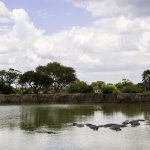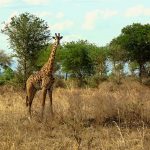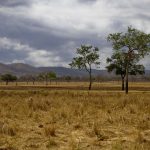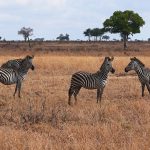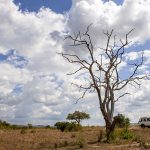Located between the Uluguru Mountains and the Lumango range, Mikumi is Tanzania’s fourth-largest national park. It’s also the most accessible from Dar es Salaam, Tanzania’s largest city. With almost guaranteed wildlife sightings, it makes an ideal safari destination for those without much time. Since the completion of the paved road connecting the park gate with Dar es Salaam, Mikumi National Park has become a hotspot for tourism in Tanzania.
[smart-grid row_height=”240″ mobile_row_height=”170″ last_row=”justify” margins=”15″ captions=”false” title=”false”]
- The Mikumi National Park under the sunshine in Tanzania.
[/smart-grid]
The park is home to a wide variety of wildlife that can easily be spotted as the animals are well acclimatized to game viewing. Mikumi’s proximity to Dar es Salaam and the amount of wildlife that live within its borders make Mikumi National Park a popular option for weekend or business visitors who don’t have time to spend on an extended safari itinerary.
Most visitors come to Mikumi National Park aiming to spot the ‘Big Five’ (cheetah, lion, elephant, buffalo, and rhino), and they are never disappointed. Hippo pools provide close access to the mud-loving beasts, and bird-watching is particularly rewarding. Mikumi National Park borders the Selous Game Reserve and Udzungwa National Park, and the three locations make a varied and pleasant safari circuit.
It is thus the most accessible part of a 75,000 square kilometre (47,000 square mile) tract of wilderness that stretches east almost as far as the Indian Ocean.
The open horizons and abundant wildlife of the Mkata Floodplain, the popular centre piece of Mikumi, draws frequent comparisons to the more famous Serengeti Plains.
Lions survey their grassy kingdom–and the zebra, wildebeest, impala and buffalo herds that migrate across it—from the flattened tops of termite mounds. Giraffes forage in the isolated acacia stands that fringe the Mkata River and also shade Mikumi’s elephants. The Mkata Floodplain is perhaps the most reliable place in Tanzania for sightings of the powerful eland, the world’s largest antelope. The equally impressive greater kudu and sable antelope haunt the miombo-covered foothills of the mountains that rise from the park’s borders. More than 400 bird species have been recorded, with such colourful common residents as the lilac-breasted roller, yellow-throated long claw and bateleur eagle joined by a host of European migrants during the rainy season. Hippos, supported by an ever-changing cast of water birds, are the star attraction in two pools situated 5km north of the main entrance gate.


